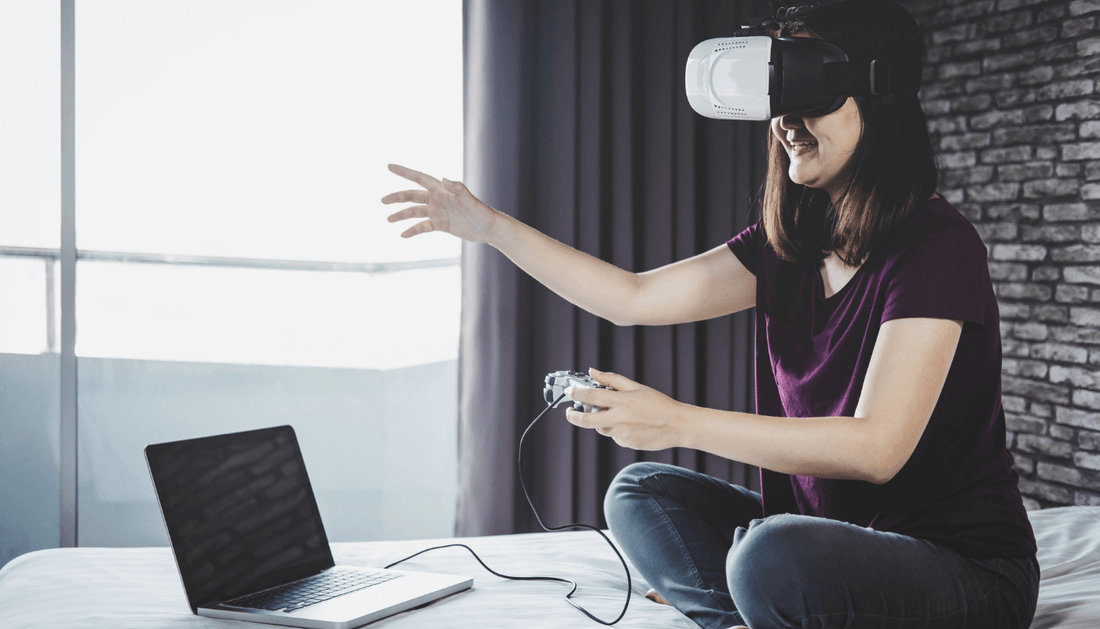
What is the Impact of Mixed Reality on Teaching?
Share
As a teacher, you've probably wondered: What is the impact of mixed reality on teaching? It's a fascinating technology that makes learning more interactive. For example, you can use Mixed Reality to teach about heart valves. And it can be used to collaborate with experts nearby. Immersion in mixed reality can improve learning in geography and psychology, and enhance emotional reactions. But how will Mixed Reality affect learning in general?
Augmented and mixed reality have many potential applications outside of the education space. For example, they can enhance training and collaboration within the workplace. The wearables also allow for real-time collaboration, troubleshooting, and other applications. This technology is particularly useful for training employees, especially new ones. It eliminates the need for employees to read voluminous manuals. A MR assistant can help new employees learn their jobs with ease, even without the need for additional training. Moreover, realistic holograms can enhance planning stages and significantly contribute to quality assurance.
Immersive education - MR wearables enable students to learn in an immersive way. They can mix volatile chemicals with experts and view virtual worlds. Students' engagement in the learning process is boosted thanks to the sensory inputs and outputs of VR. With VR, the teacher's role will change from delivering content to facilitation. Instead of providing ready-made knowledge and providing a static, boring classroom, a teacher can focus on creating conditions for exploration and learning. Students can learn from a live subject and can even mix volatile chemicals.
Virtual reality in education is an ideal tool to enhance creativity in students. It can also improve the retention of information, enhance emotional responses, and boost creative development. As more students learn through seeing rather than hearing, VR tools can make learning more engaging and creative. VR has numerous benefits for both students and educators. In fact, the possibilities are practically endless.
Augmented reality has been used in many fields, including research on electrical systems and computer systems. AR technology is increasingly used by NASA for simulations of spacewalking, and many other uses. With the growing use of VR and AR in education, researchers are finding new ways to enhance learning and enhance understanding. With this technology, institutions will transform the learning experience for the next generation of students. And who knows, maybe mixed reality will revolutionize our world!
Currently, many industries are using VR or AR technologies to train their employees. Walmart, for example, uses VR onboarding for their employees in the midst of a busy workload. The stressful situations associated with long queues, numerous discounts, and waiting customers are not ideal for experienced employees. VR onboarding for new specialists enables them to cope with these nonstandard working situations while getting into different scenarios. Other colleagues can even comment on their trainees' decisions, which makes training more interactive and reduces the risk of mistakes for new employees.
Previous studies have shown that AR may increase the amount of effort required for users to interpret visual information. The users of AR must process information from different channels at the same time. This may increase their mental workload and stress levels. A recent study has found that the amount of work required for users to do this could be significantly higher than in non-AR scenarios. In the short-term, mixed reality may even reduce the amount of time it takes to learn new information.
What is the impact of virtual reality on teaching or learning? VR and AR will help students live the subject. By letting students experience the subject, the students can learn better and use their knowledge in practical situations. But these two technologies aren't yet mainstream in educational institutions. According to Internet2, two-thirds of universities are testing or using VR in their classrooms. Meanwhile, some universities are developing AR/VR studios for students to study for a degree.
In education, VR can be used to engage students in subjects like literature, history, and geography. With an immersive sense of place and time, students can experience what's happening in the subject through VR and interact with it in a more meaningful way. The impact of VR on education is far from obvious, but it's undeniable. In addition, mixed reality can be used to engage students in different ways, including telepresence and virtual interactions.
VR headsets can help students engage in social interaction, reducing social barriers that can hinder learning at an early age. Additionally, the virtual environment can be more engaging for secondary students, which may require less guidance from teachers. It's not clear how VR headsets will impact teaching and learning, but the potential is immense. The benefits of VR are huge for students and educators alike. When used properly, the technology can transform the classroom experience.
Thank you for visiting ARVRedtech.com. If you liked this information, please share it with a friend. You can also sign up for our newsletter to receive the latest information in AR and VR in the education and beyond. If you know of an app, service, or company using augmented reality in travel, or virtual reality in education that we should feature here, please contact us using the contact form, we would love to hear from you.